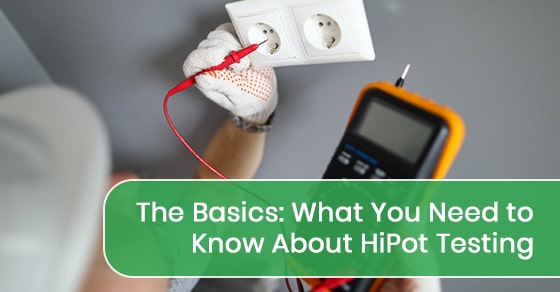The Basics: What You Need to Know About HiPot Testing
HiPot testing in Toronto has many relevant uses, but safety guidelines must be followed, and a safe area must first be established before the test can take place. For many years, HiPot testing has served as the gold standard for measuring the safety compliance of a myriad of different electronic devices.
We have also come a long way in regards to the technology and science involved, as modern HiPot testers use state-of-the-art electrical source technology to guarantee compliance with IEC-61010 protocols.
We should also note that there is absolutely no proper substitute for operator competence, so the first step that should be taken to ensure safety is to ensure that operators are provided with the training that they need. Only then can a safe testing environment be fostered. Here, we will look into the basics of HiPot testing.
Safety First
First and foremost, the operator must be in optimal health. Thus, if the candidate for the position has a medical condition, such as a health condition that requires a pacemaker, then they should not be allowed to work near a site that involves high voltage.
All operators should be taught that high voltage is very dangerous and possibly lethal, and they must be shown how to avoid touching any circuits that have been energized. They should also be taught how to avoid shock hazards and should have a thorough understanding of how electrical current affects the human anatomy.
Furthermore, all operators, as well as regular workers for that matter, should be taught how to perform compression-only CPR if someone on the premises is electrocuted.
Safety Interlocks
Operators must be taught about the importance of safety interlocks and how they work, and should also be reminded that safety interlocks must never be disabled under any circumstances.
Furthermore, they must be taught how to quickly and safely disable or interrupt power in an emergency. Operators should not wear metallic jewelry when they are working around or near electrical or electronic equipment.
Programing the Necessary Tests
Operators will need to program all of the necessary tests and then store said tests into their memory database. A procedure must be implemented that demonstrates which memory locale should be utilized for each unit that is being assessed.
The procedure above should outline the actual test that is being administered (e.g., limits, test time, DC or AC, voltage). We should also note that each test comes installed with a key lock feature. This is a feature that an operator should quickly be familiar with, as doing so will ensure that programs will not be changed to unknown values in the not too distant future.
Test Objectives
Furthermore, during the training period, the operator should be taught each test's objective and every test by their instructor. They should know how each test is implemented and how they should best respond to both abnormal and normal situations that may develop during their tenure at the company.
Also, testing limits should not only apply to the actual tests, as the operator must know when to tackle an issue themselves and when to ask a higher-up for aid to resolve a particularly taxing problem.
Regular meetings should be held to ensure that the operator is abreast of the latest safety measures and developments so that safety protocols and procedures can be updated as needed.
Determining Where to Place the Test Area
Next, we will need to shift our focus towards the actual test area. That is, you will need to determine where to erect the test station. The general rule of thumb is to try and find an area isolated from your factory's assembly area.
In addition, to ensure the safety of both the operator and pedestrians, the test station should be constructed in an area that is a great distance away from foot traffic.
It is of the utmost importance that the operator is kept away from anything that may distract them from doing their job properly. Signage that has been internationally approved should also be erected to warn passersby of the dangers that they may be subjected to if they were to enter a prohibited area (for example, “High Voltage”).
The testing apparatus should have indicator lights installed so that the operator is aware when high voltage is present.
Polarization and Grounding
The test station must receive reliable and ample power whenever it is needed without compromise. You will need to meticulously check the power wiring to ensure that it adheres to electrical code requirements for both grounding and polarization.
For example, the operator may become injured on the job if the tester that they are using is not properly connected to terra firma.
Yet another important caveat to strongly consider is the use of metallic materials, which may cause serious injury. The operator shouldn't use a bench surface made with metallic substances and elements. As well, they should avoid working in an area that has metallic objects or materials present.
If, however, metal objects need to be present for a work-related matter, then they should be kept grounded at all times. Or, they should only be used in an area that is a great distance away from the HiPot testing station to mitigate risk.
We would also not recommend that you use an ESD mat for your HiPot test station, as it may trigger erroneous readings for leakage and will likely serve as an encumbrance that is best avoided if possible.
Call the Professionals
If you would like to learn more about HiPot testing, please visit Circuits Central on our website or call us at 888-821-7746.

